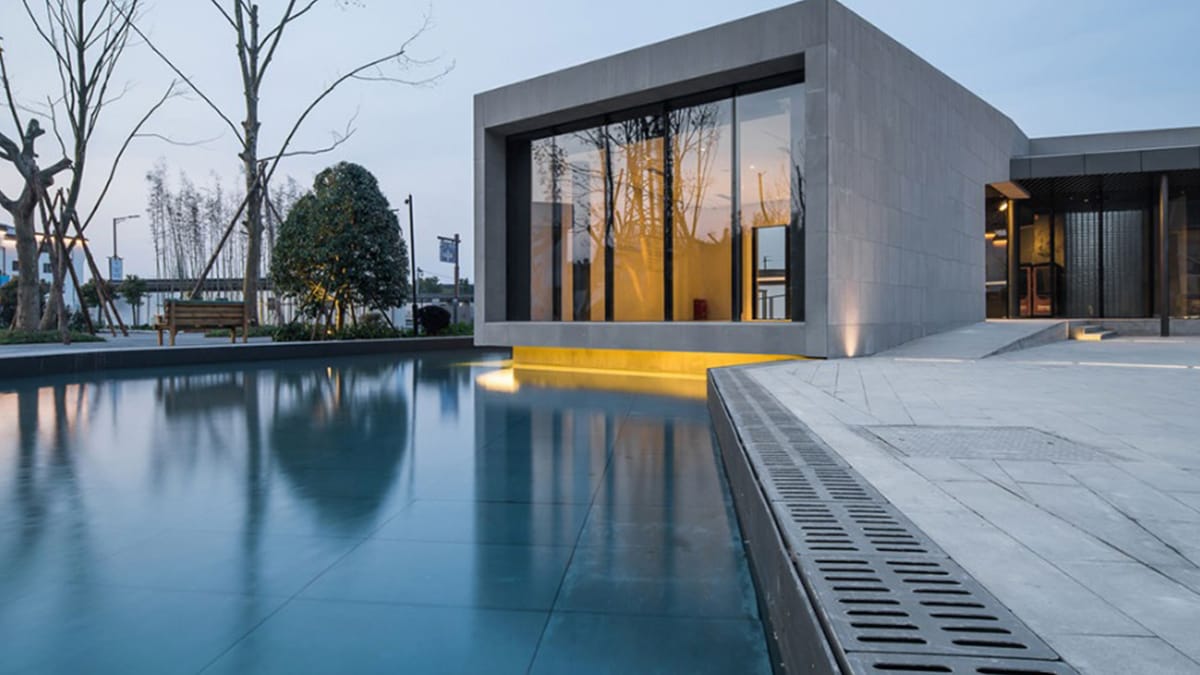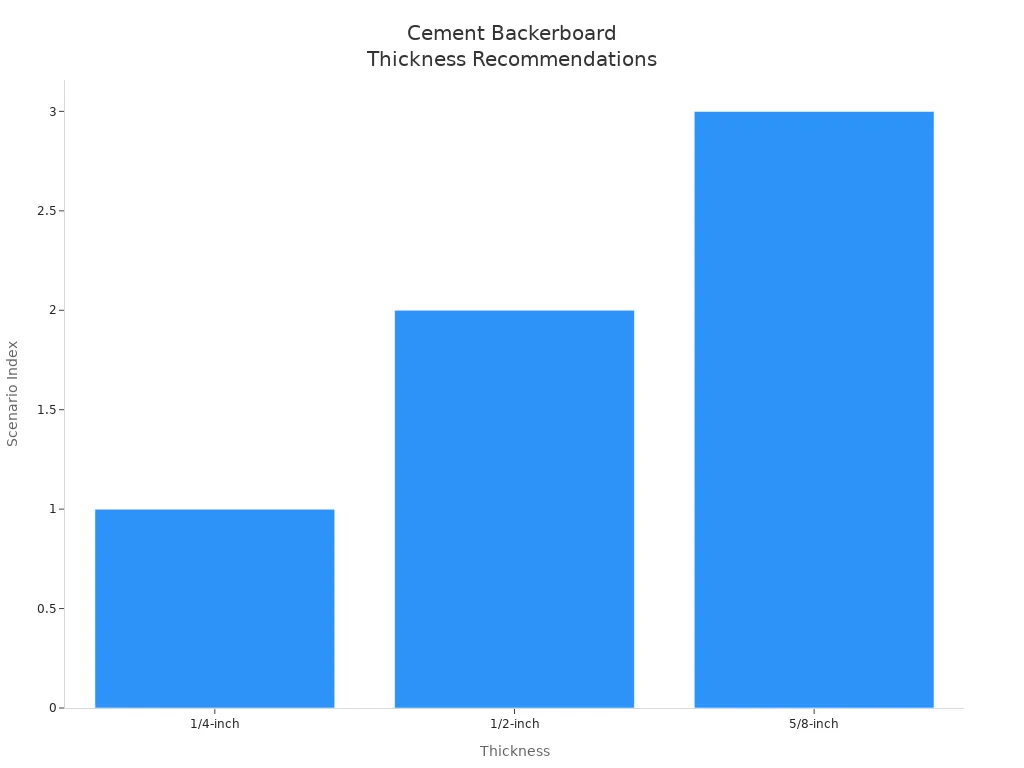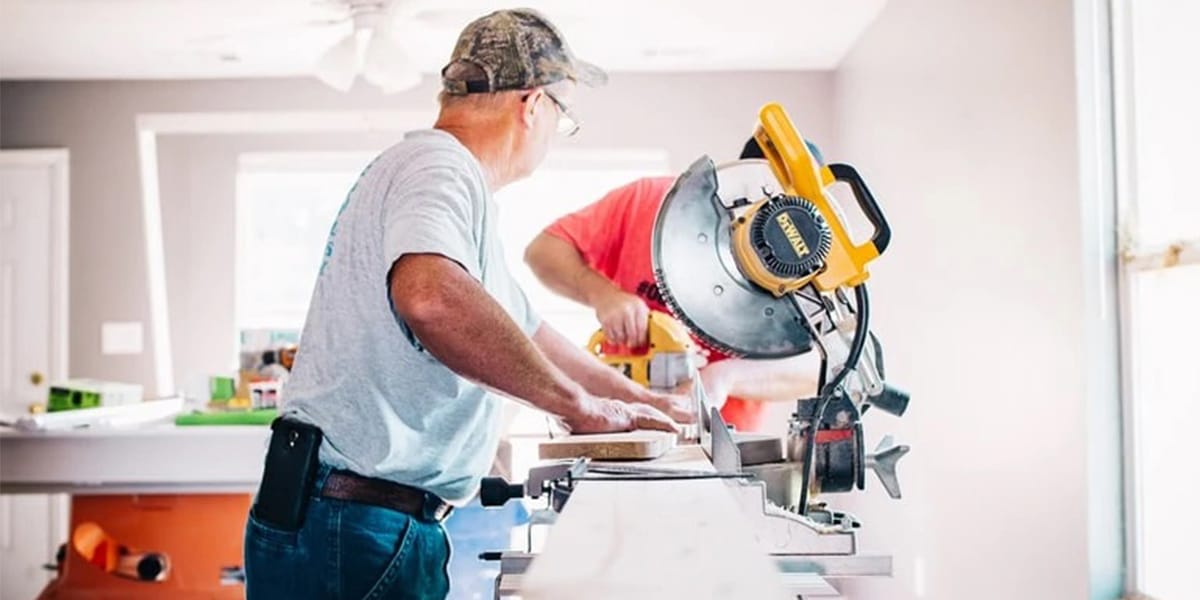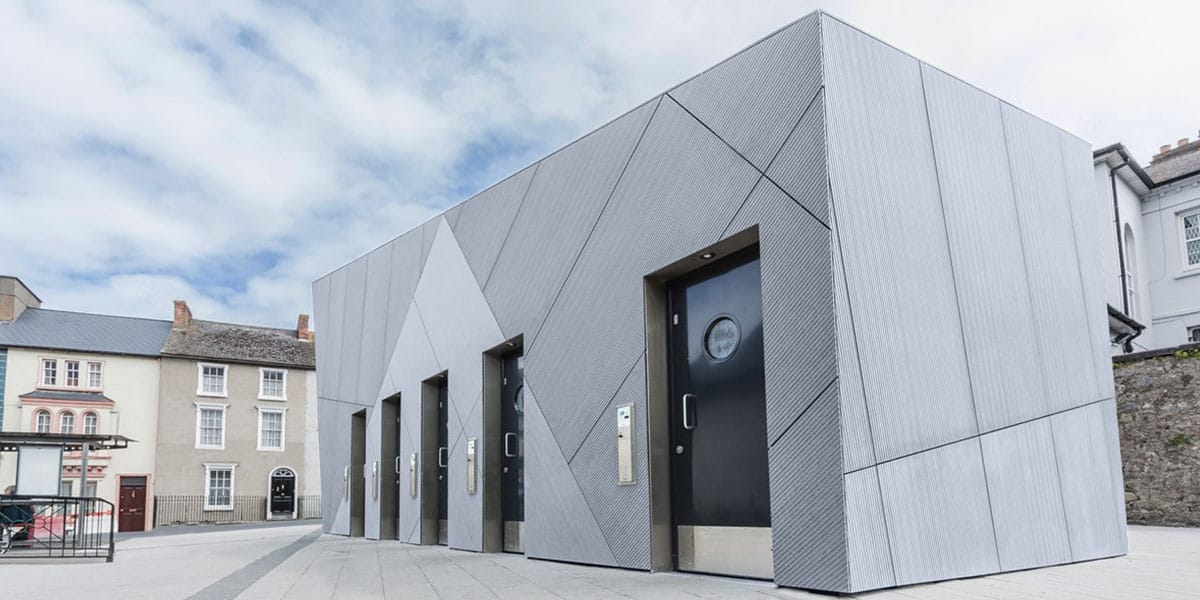
11 Oct A Guide to Cement Board and Its Applications in Building
Table of Contents
Cement board is a strong, flat panel. It is made from cement and special fibers. People use it in building as a base for tile. It works well in wet places like bathrooms or kitchens. Many builders pick cement board because it handles water and mold better than drywall or wood. It also does not break easily from bumps or hits. This makes it a good choice for homes and businesses. It is best where you need something tough and long-lasting.
Aspect | Drywall | Cement Board |
|---|---|---|
Impact Resistance | Gets dents, scratches, and holes | Very strong, does not get damaged easily |
Moisture Resistance | Gets ruined by water and mold | |
Long-term Durability | Can crack or bend over time | Lasts longer, stays strong in wet places |
Maintenance Costs | Costs more because of repairs | Costs less because it needs fewer repairs |
Key Takeaways
Cement board is strong and does not get damaged by water. It works well in wet places like bathrooms and kitchens. It stops mold and water problems. This helps tiles last longer.
Cement board is better than drywall and wood. It protects against bumps and water. It saves money over time because it needs fewer fixes.
Fiber cement board is light but tough. You can use it for many things like outside walls, roofs, and room dividers. It does not burn easily. Bugs and bad weather do not harm it.
You must install cement backerboard the right way. This gives tiles a flat and steady base. Follow steps for getting ready, putting it in, and sealing it. This helps your project work out well.
Cement board can be used in many places. You can use it in homes or busy kitchens. It lasts a long time and does not get ruined by water. It is a good choice for any building job.
Cement Board Overview
What Is Cement Board
You see cement board in many building projects. This material is a flat, sturdy panel made from cement mixed with special fibers. Manufacturers use a process called the Hatscheck method to create fiber cement board. They combine cement, cellulose fibers, and sometimes sand or other additives. This mixture forms a strong sheet that can handle tough conditions.
Cement board often contains cement reinforced with fiberglass mesh. This makes it stable and strong.
Fiber cement boards mix cement and cellulose fibers. You get a product that resists harsh weather, fire, and pests.
These boards do not rot or attract termites. You can expect them to last over 50 years with proper care.
Fiber cement boards are non-combustible and have a high fire rating. You can use them in places where safety matters.
You can rely on cement board for areas that need durability and moisture resistance. Builders choose it for kitchens, bathrooms, and other wet spaces. Its strength supports tile and stone, making it a trusted base in construction.
Tip: If you want a material that stands up to water, mold, and impact, cement board is a smart choice for your next project.
Cement Board vs. Drywall and Wood
You might wonder how cement board compares to drywall and wood. Each material has its own strengths and weaknesses. Let’s look at the main differences:
Cement board costs more to install than drywall. You pay higher labor and material fees.
Drywall is lighter and easier to put up. This makes it cheaper for most jobs.
Cement board gives you better durability and moisture resistance. You spend less on repairs over time.
Wood panels need sealing to resist moisture. Even then, they do not match the water resistance of cement board.
Drywall does not work well in wet areas. It can grow mold and break down when exposed to water.
Fiber cement boards resist rot, termites, and weather. You do not need to worry about pests or decay.
Cement board provides a stable surface for tile and stone. You protect your walls and floors from cracks and damage.
Cement board stands out in places where water and impact are common. You get a long-lasting, low-maintenance solution. Drywall and wood may cost less at first, but you often pay more for repairs and replacements. If you want a reliable base for tile or stone, cement board is the best option.
Types of Cement Board
 Fiber Cement Board
Fiber Cement Board
Fiber cement board is used in many buildings. It is made from cement, silica, cellulose fibers, and other things. This mix makes a panel that is light and strong. You can use fiber cement board for walls, partitions, and as a base for tile. Builders like it because it does not burn or get damaged by water. It has a Class A fire rating, so it works well in tough places.
Type of Cement Board | Fire Resistance Rating | Notable Features |
|---|---|---|
Fiber Cement Board | Class A | Excellent durability and weather resistance |
Calcium Silicate Board | A1 (non-combustible) | Ideal for high-heat environments |
Magnesium Oxide Board | Fireproof | Suitable for wet and fire-prone areas |
Fiber cement board can be used for roofs in places with bad weather. It is also good for outside walls and house siding. In big buildings, fiber cement board is used for strong and flexible partitions. You can use it under floors in wet areas and for ceilings in factories.
Tip: If you need something that can handle rain, heat, and hits, fiber cement board is a good choice.
Here are some ways people use fiber cement board:
Outside walls for homes and offices
Roofs in places with rough weather
Inside walls and partitions in big buildings
Under floors
Ceilings in factories and warehouses
Cement Backerboard
Cement backerboard is often used under tile in bathrooms, kitchens, and laundry rooms. It is made by putting a thin layer of concrete between two layers of fiberglass. This makes it strong and keeps water out. Cement backerboard does not get ruined by water, so you can put it over drywall or floors.
Thickness | Best for | Use it when | Pros | Cons |
|---|---|---|---|---|
1/4-inch | Floor tiling over existing subfloors | You need a stable underlayment that doesn’t significantly raise height. | Lightweight and easy to install. | Not recommended for wall installations. |
1/2-inch | Walls, countertops, and floors | Installing tiles on walls or need extra durability on floors. | Provides better support and stability. | Heavier and can add more height to flooring. |
5/8-inch | Heavy-duty flooring and industrial applications | Areas that require extra strength and support, such as commercial kitchens. | Offers the highest durability and resistance to bending. | Can be overkill for residential applications. |

You can buy cement backerboard in sheets that are 3 feet by 5 feet or 4 feet by 8 feet. The 1/2-inch size is best for floors, and the 1/4-inch size is best for walls. Cement backerboard is also used in fiber cement board partitions to make them stronger. Some popular brands are James Hardie, CertainTeed, and USG Corporation.
Benefits of Cement Board
Water and Mold Resistance
Tiles need to last in wet places. Cement board and fiber cement board stop water from getting in. These boards do not soak up water fast. PermaBase® BRAND Cement Board did best in mold tests. It passed ASTM D3273 and ASTM G21 tests. It also has the lowest water-absorption score from ASTM C473. This means cement board helps keep mold away. Your walls and floors stay safe from mildew.
Fiber cement board works well when it is humid. You can use it in bathrooms, kitchens, and laundry rooms. If you install and care for it right, it will not rot or get mildew. Water resistant fiber cement board is smart for cladding in wet places. It keeps your tiles safe and your home healthy.
If you want a base that does not let water in, backerboard is a good pick for wet rooms.
Durability and Strength
You need something strong for daily use. Fiber cement board and backerboard last longer than wood or drywall. They are tough and do not break easily. Look at the table below to see how long each material lasts:
Material | Average Lifespan |
|---|---|
Fiber Cement Board | |
Wood Siding | 20 to 40 years |
Vinyl Siding | Less than Fiber Cement |
Brick Siding | 20 to 25 years |
Stone Siding | Longer than Brick |
Backerboard does not get damaged by bumps like drywall. Tests show cement board can take hits, but very hard hits may break it. You get a strong base for tiles in busy places. Fiber cement board is also good for cladding and building projects that need strength.
Stable Base for Tiling
You want your tiles to stay put and look nice. Backerboard gives you a flat and strong surface for tiles. You can use MAPEI’s Type 1 adhesive or Premium Mortar to stick tiles to cement board and fiber cement board. These glues help tiles stay on longer. If you use a waterproof layer, pick the right glue for your job.
Fiber cement board and backerboard work with many tile types. You can use them for cladding, walls, and floors. The table below shows how cement board helps tiles:
Feature | Benefit |
|---|---|
Waterproof | Stops water from hurting tiles. |
Shape Retention | Stays strong even when wet. |
Mold Resistance | Keeps mold and mildew away. |
Compatibility with Tiles | Works with lots of tile types. |
Backerboard and fiber cement board make tile jobs easier and better. You get a strong, water-safe base for cladding and other building uses.
How to Install Cement Backerboard
 Installing cement backerboard gives you a strong, water-resistant base for tile. You need to follow the right steps to get the best results. This section will show you how to install cement backerboard with clear instructions and helpful tips. You will learn about the tools you need, how to prepare your space, and the best way to finish the job.
Installing cement backerboard gives you a strong, water-resistant base for tile. You need to follow the right steps to get the best results. This section will show you how to install cement backerboard with clear instructions and helpful tips. You will learn about the tools you need, how to prepare your space, and the best way to finish the job.
Preparation Steps
Before you start, gather all your tools and materials. You will need:
Cement backerboard sheets
Corrosion-resistant screws or nails made for cement backerboard
Alkali-resistant fiberglass mesh tape
Thin-set mortar
Utility knife or carbide-tipped scoring tool
Circular saw with a fiber cement blade (if needed)
Measuring tape and pencil
Safety glasses, N95 mask, and gloves
Level and shims
Drill or screwdriver
Tip: Always wear safety glasses and an N95 mask. Cement backerboard creates dust that can harm your eyes and lungs. Gloves protect your hands from cuts. Work in a well-ventilated area and use proper lifting techniques to avoid back strain.
Start by checking your wall or floor framing. Make sure it is solid and meets local building codes. Strap the walls if needed to prepare for cement backerboard installation. Use shims to flatten any wavy spots. A flat surface helps your backerboard sit tight and even.
Next, measure the area where you will install the cement backerboard. Mark your cuts on the board with a pencil. Score the board with a utility knife or use a circular saw with a special blade. Always seal cut edges right after cutting to keep out moisture.
Lay out your cement backerboard sheets before fastening them. Arrange the boards in a staggered pattern so four corners never meet. Leave a small gap (about 1/8 inch) between sheets for expansion. This helps prevent cracks later.
Installation Process
Now you are ready for the step-by-step installation guide. Follow these steps for a successful backerboard installation:
Start at the Bottom: Place the first sheet of cement backerboard a quarter inch above the floor, tub, or shower base. This gap keeps water from wicking up into the board.
Fasten the Board: Use corrosion-resistant screws or nails made for cement backerboard. Secure the board every 8 inches along the studs or joists. Keep fasteners 3/8 inch from the edges and 2 inches from the corners. Drive the fasteners flush with the surface, but do not overdrive.
Stagger the Joints: Arrange the boards so that seams do not line up. This makes your wall or floor stronger. Never let four corners meet at one point.
Leave Expansion Gaps: Always leave a 1/8-inch gap between sheets. This allows for movement and stops cracks.
Treat the Joints: Cover all seams with alkali-resistant fiberglass mesh tape. Use a drywall knife to apply thin-set mortar over the tape. Feather the edges to make a smooth surface for tile.
Seal Cut Edges: Prime and seal all cut edges right after cutting. This step keeps moisture out and protects your cement backerboard.
Check for Flatness: Use a level to check your work. Add shims if you see any dips or bumps. A flat surface helps your tiles stick better.
Clean Up: Wipe away any dust or debris. Let the mortar dry before you start tiling.
Note: Always follow the manufacturer’s instructions for your specific cement backerboard. Each brand may have small differences in installation.
Common Mistakes to Avoid
Many people make mistakes during cement backerboard installation. Here are the most common errors and how you can avoid them:
Skipping proper surface preparation. Always make sure your surface is level, clean, and strong.
Using the wrong fasteners. Only use corrosion-resistant screws or nails made for cement backerboard.
Placing fasteners too close to the edge or not enough fasteners. Keep the right distance and spacing.
Not sealing cut edges. Always prime and seal after cutting.
Forgetting expansion gaps. Leave space between boards for movement.
Ignoring joint treatment. Use fiberglass tape and mortar on all seams.
Painting without priming. Always use an alkali-resistant primer before painting.
Cutting boards with the wrong tools. Use a scoring tool or a saw with a fiber cement blade.
Overlooking moisture management. Install a moisture barrier or membrane behind the cement backerboard in wet areas.
Rushing the job. Take your time and follow the manufacturer’s guide for a successful backerboard installation.
🛠️ Pro Tip: Double-check your work at each step. Careful installation now saves you time and money later.
You now know how to install cement backerboard for your next project. Careful preparation and attention to detail will help you get a strong, water-resistant base for tile. Follow this guide, and you will enjoy a long-lasting, professional result.
Backerboard Applications

Bathrooms and Wet Areas
Backerboard is used a lot in bathrooms. It is also used in other wet places. When you put tile in a shower, cement backerboard makes a strong base. Drywall soaks up water, but cement backerboard does not. This keeps your shower walls safe from mold. It also stops mildew from growing. Your home stays safe from water damage. The space stays healthy for everyone. Cement backerboard can handle heavy use. It lasts for many years in busy bathrooms. Builders like fiber cement board for shower walls. It does not let water in and stays firm.
Some ways to use cement backerboard in wet areas are:
Shower walls and floors
Bathtub surrounds
Laundry rooms
Pool areas
🛁 Tip: Pick backerboard if you want a tile base that does not break down in wet places. It works well in kitchens and bathrooms.
Benefit | Description |
|---|---|
Stops swelling and breakdown from water exposure | |
Mold Resistance | Keeps mold and mildew away |
Durability | Lasts for decades, even under heavy tiles |
Easy Installation | Works with standard tools and tile adhesives |
Kitchens and Countertops
You need a strong surface for kitchen backsplashes. You also need it for countertops. Cement backerboard gives a steady base for tile. It does not get ruined by water or heat. Cooking does not hurt it.
Fiber cement board is used for kitchen walls. It is also used under countertops. PermaBASE WP Waterproof Cement Board gives extra protection. This board has waterproofing built in. You do not need extra layers.
People use cement backerboard in kitchens for:
Backsplashes behind sinks and stoves
Countertop underlayment
Wall panels near water sources
🍽️ Note: When you put tile in your kitchen, backerboard helps stop water damage. It keeps your tiles in place.
Flooring and Walls
Floors and walls need to be strong and flat. Cement fiber board for flooring makes a solid base for tile. It also works for stone or laminate. First, measure your space. Add five percent for waste. Lay out the backerboard before you attach it. Put thin set on the floor first. Then screw the board down every six to eight inches. Tape and fill the joints to make it smooth.
Fiber cement board wall cladding is good for living rooms. It works in hallways and entryways too. It stays flat and strong in any weather. Backerboard does not let water in. It also resists fire. This makes it smart for building projects.
Use backerboard for these jobs:
Tile underlayment in bathrooms, kitchens, and entryways
Wall panels in busy areas
Subfloor for laminate or stone
Fiber cement board wall cladding in commercial buildings
Property | Description |
|---|---|
High dimensional stability | Stays flat and strong in any weather |
Protects floors and walls from water damage | |
Fire resistance | Adds safety to your home |
Durability | Needs little upkeep and lasts a long time |
🏠 When should you use cement backerboard? Use it anywhere you need a tough, water-resistant base. Cement fiber board for floors and fiber cement board for walls are good choices for lasting results.
You get strong protection when you use cement board in construction. Cement board absorbs very little water, so it helps stop mold and keeps its strength for years. You do not see swelling or damage in wet places like kitchens or bathrooms. Industry experts say cement board works better than drywall or wood in moisture-prone spaces. If you want a base that lasts and stays safe, choose cement board for your next project.
FAQ
Can you use cement board outside?
You can use cement board outdoors. It resists rain, wind, and sun. Builders use it for siding, exterior walls, and outdoor kitchens. Always check the manufacturer’s instructions for outdoor use.
Do you need to waterproof cement board before tiling?
You should add a waterproof membrane over cement board in wet areas. Cement board resists water, but a membrane gives extra protection. This step helps prevent leaks and mold.
What tools do you need to cut cement board?
You need a utility knife, scoring tool, or circular saw with a fiber cement blade. Always wear safety glasses and a mask. Cutting creates dust that can harm your lungs.
🛠️ Tip: Score and snap for straight cuts. Use a saw for curves.
How thick should cement board be for floors and walls?
Area | Recommended Thickness |
|---|---|
Floors | 1/2 inch |
Walls | 1/4 inch |
You should use thicker boards for floors. Thinner boards work well for walls and backsplashes.

 Fiber Cement Board
Fiber Cement Board